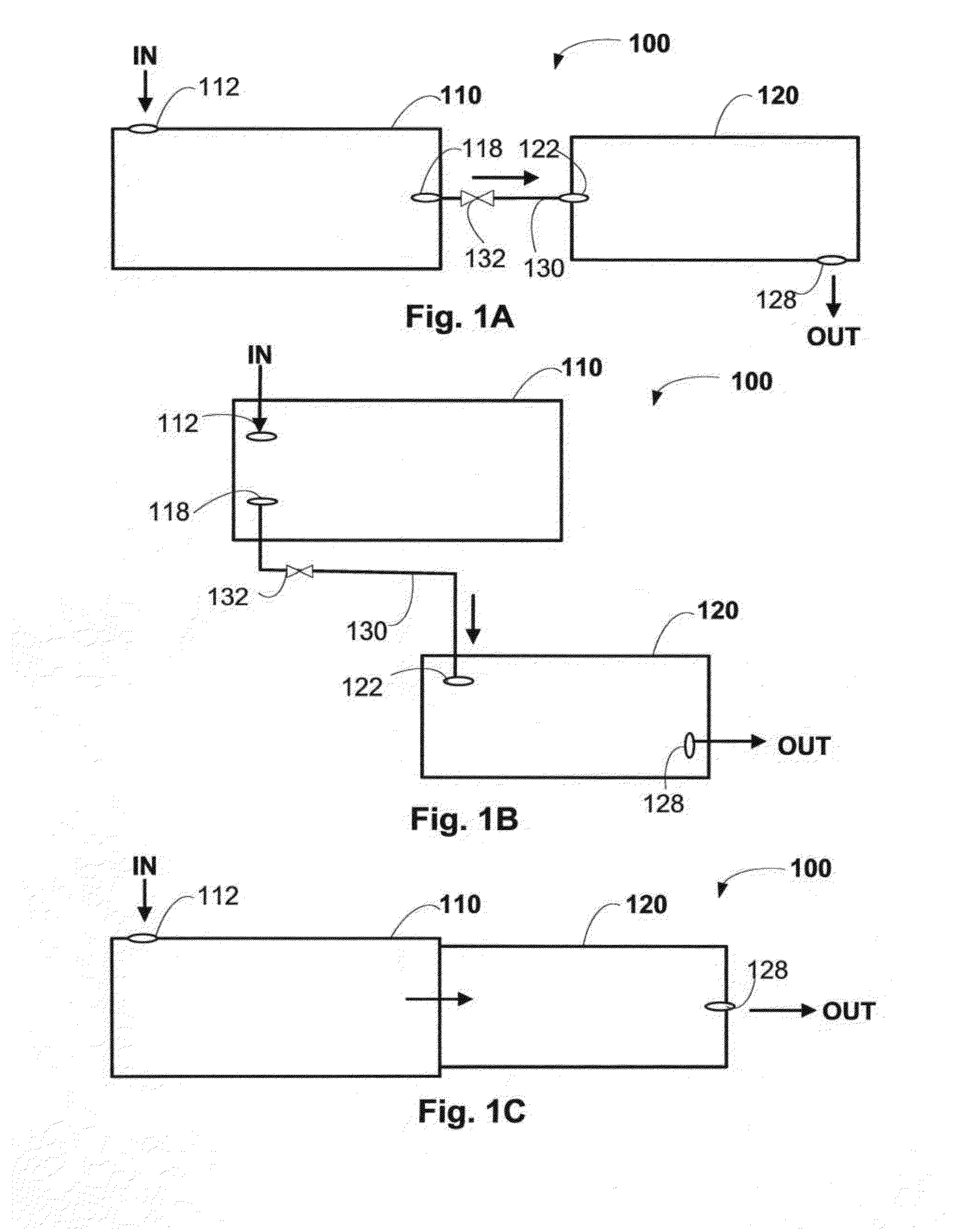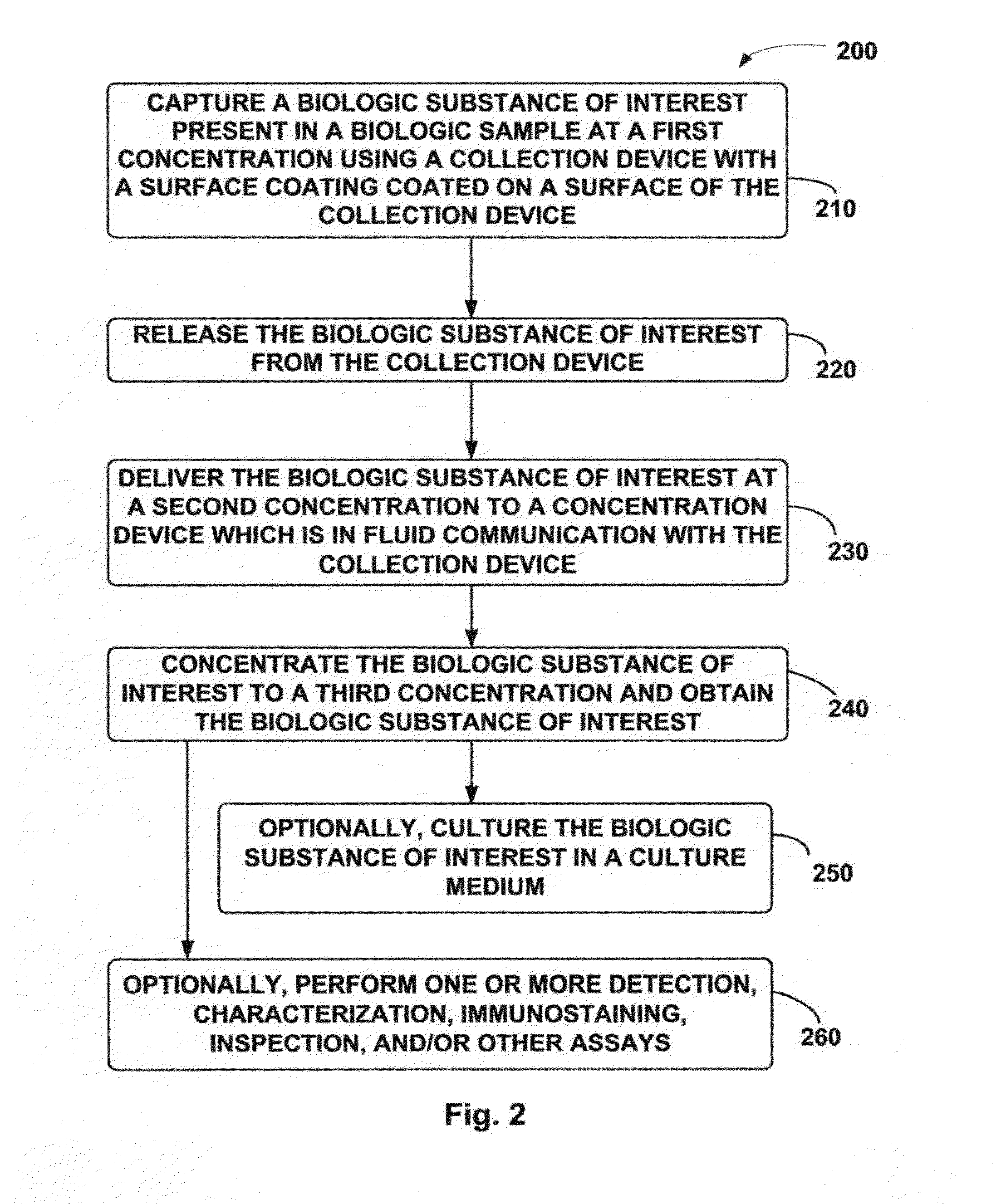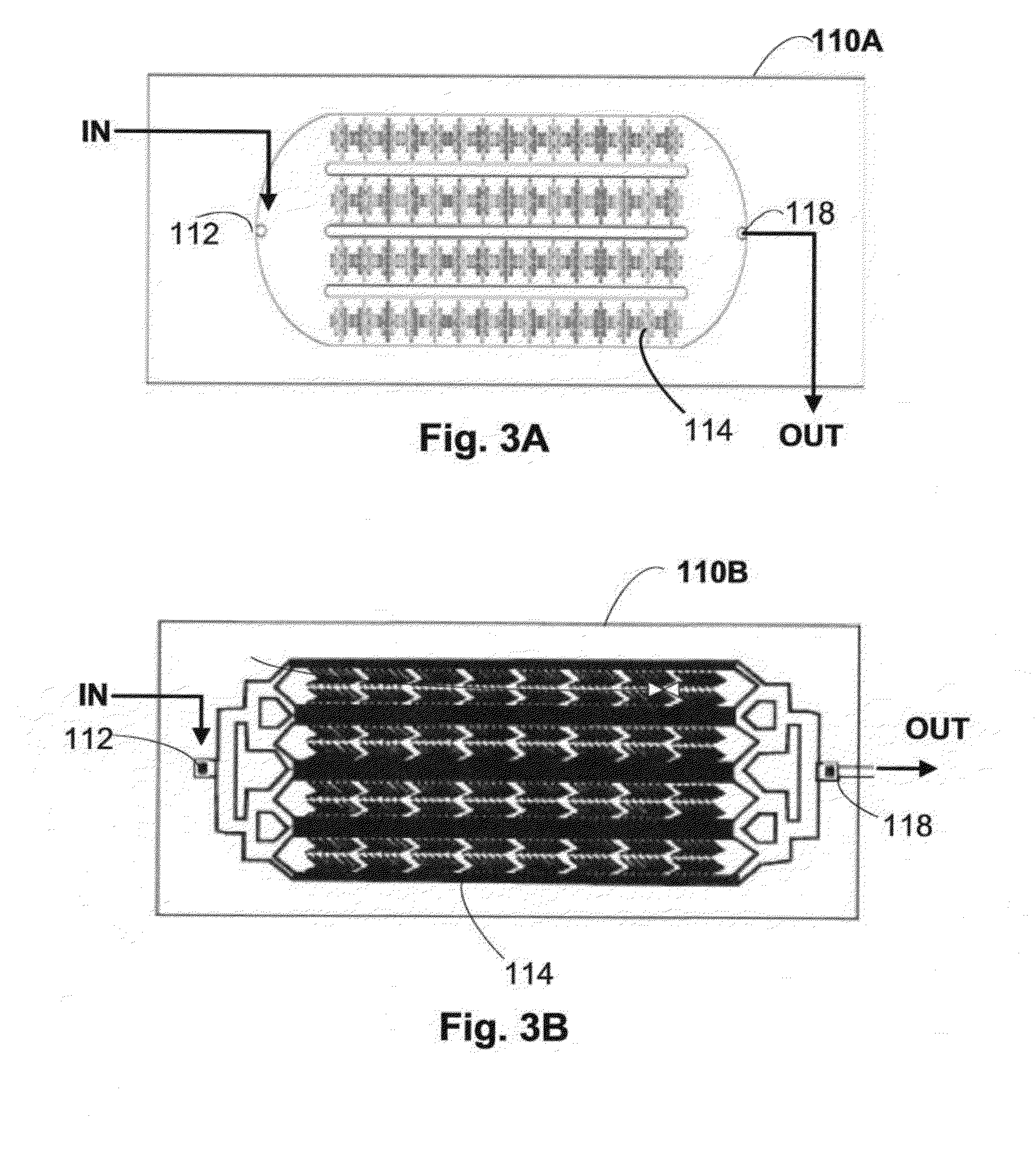Collection and Concentration System for Biologic Substance of Interest and Use Thereof
a technology of biological substances and concentration systems, applied in the field of systems and devices for collecting and concentrating biologic substances of interest, can solve the problems of large equipment requirements, difficult and technical challenges to detect, isolate, and collect rare cell detection ctcs, and the major bottleneck of most systems for rare cell detection lies in imaging techniques,
- Summary
- Abstract
- Description
- Claims
- Application Information
AI Technical Summary
Benefits of technology
Problems solved by technology
Method used
Image
Examples
example 1
Preparation of the Two-Layer Surface Coating
[0109]Preparation of the Nonfouling Composition:
[0110]Supported lipid bilayer (SLB) was prepared by dissolving POPC and b-PE (commercially available from Avanti Polar Lipids, USA) in chloroform, in a clean glass tube at a final lipid concentration of 5 mg / mL. The POPC / b-PE solution was dried by vortexing under a slow stream of nitrogen to form a thin, uniform POPC / b-PE film. The POPC / b-PE film was dried in a vacuum chamber overnight to remove residual chloroform. The dried POPC / biotin-PE film was dispersed in and mixed with a phosphate buffer containing 10 mM of phosphate buffered saline, 150 mM of sodium chloride aqueous solution, and 0.02 (w / v) of sodium azide (NaN3, commercially available from Sigma-Aldrich, USA), with the pH adjusted to 7.2. The mixed solution was filtered through 100-nm, followed by 50-nm Nuclepore® track-etched polycarbonate membranes (Whatman Schleicher & Schuell, Germany) for at least 10 times under 150 psi at room...
example 2
Preparation of a Microfluidic Chip
[0124]The microfluidic chip can be prepared by using a commercial CO2 laser scriber (Helix 24, Epilog, USA) to engrave the microtrenches to form microstructures on the PMMA substrate. The microfluidic chip, nuts, PMMA substrate and glass slides were cleaned with MeOH, detergent and water, followed by 10 min sonication. The nuts and the solid substrates were dried by nitrogen gas and baked for 10 min at 60° C. The PMMA substrate was bonded with nuts by chloroform treatment. The PMMA substrate and the glass slide were joined together using an adhesive (e.g. 3M tape from 3M, USA). The assembled chip was scraped by a plastic tip to tighten the bonded components.
example 3
CTCs Binding to the Surface Coating
[0125]A total of 8 Blood samples were used to determine the CTC capture efficiency of the surface coating in the microfluidic chip in Example 2. Each blood sample contained 2 ml of blood samples from stage IV colon cancer patients and the sample was introduced to the sealed channel of the microfluidic chip at 0.5 ml / hr, controlled by a syringe pump. Subsequently, the sealed channel in the microfluidic chip was rinsed with 0.5 ml of PBS buffer at the flow rate of 1 ml / h, followed by in situ immunostaining.
[0126]The surface coating before and after the buffer rinse are compared. Prior to the buffer rinse, the surface coating was covered with non-specific blood cells (low-level red fluorescence in upper left) and four CTCs (red dots in lower left). After the buffer rinse, almost all of the non-specific blood cells were removed (upper right) but the four CTCs (lower right) remained on the surface coating. The number of CTCs captured per ml of blood for...
PUM
| Property | Measurement | Unit |
|---|---|---|
| Surface area | aaaaa | aaaaa |
| Concentration | aaaaa | aaaaa |
| Microstructure | aaaaa | aaaaa |
Abstract
Description
Claims
Application Information
 Login to View More
Login to View More - R&D
- Intellectual Property
- Life Sciences
- Materials
- Tech Scout
- Unparalleled Data Quality
- Higher Quality Content
- 60% Fewer Hallucinations
Browse by: Latest US Patents, China's latest patents, Technical Efficacy Thesaurus, Application Domain, Technology Topic, Popular Technical Reports.
© 2025 PatSnap. All rights reserved.Legal|Privacy policy|Modern Slavery Act Transparency Statement|Sitemap|About US| Contact US: help@patsnap.com



